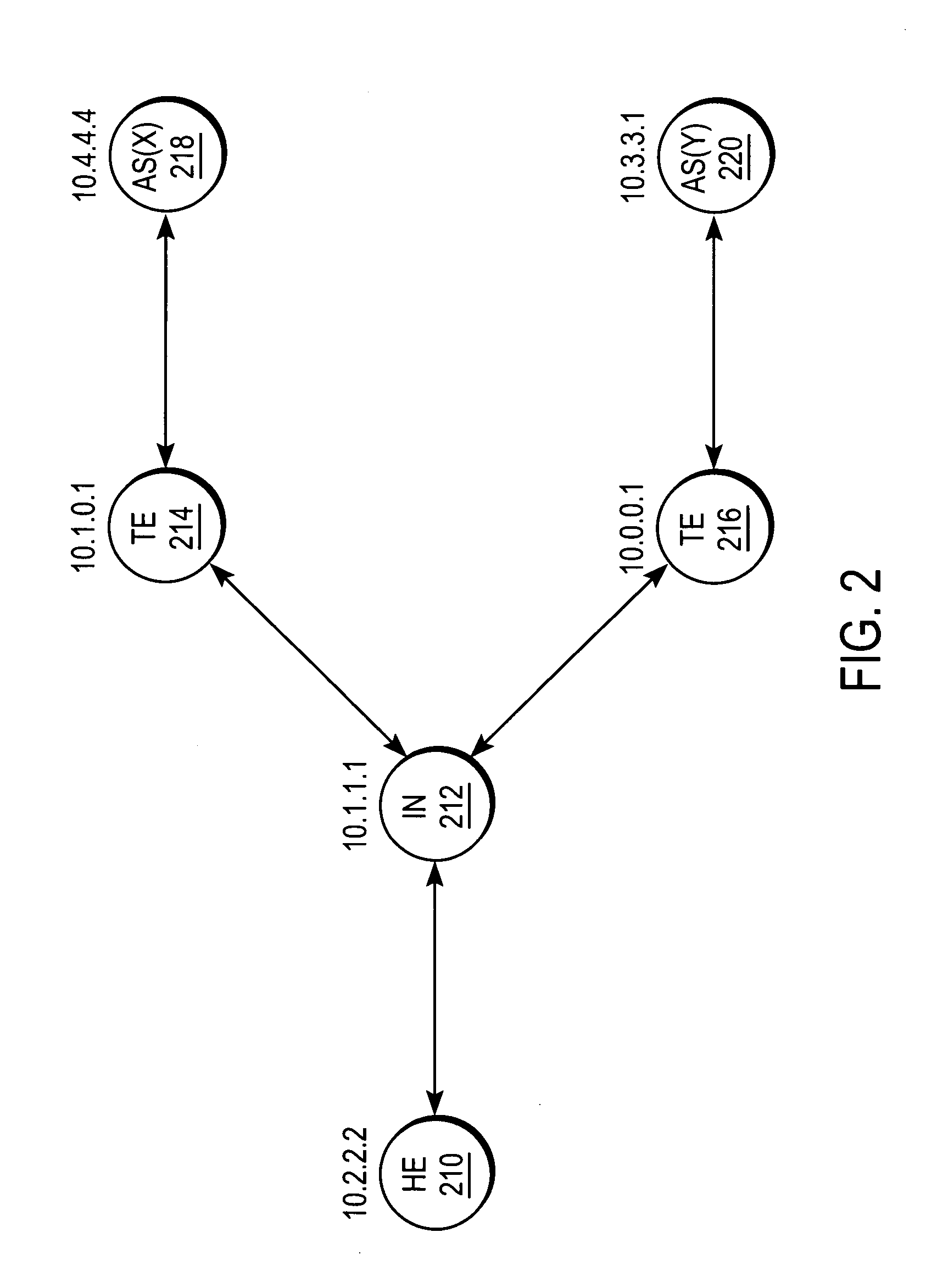Sharing IP network resources
a technology of ip network resources and backbone networks, applied in data switching networks, high-level techniques, instruments, etc., can solve the problems of affecting the bandwidth available to other isp users, affecting the efficiency and practicality of channel allocation to particular isps, and the upstream frequency spectrum of cable networks available to cable modems is limited to frequencies below 80 mhz. , to achieve the effect of efficient sharing of customer access and backbone networks
- Summary
- Abstract
- Description
- Claims
- Application Information
AI Technical Summary
Benefits of technology
Problems solved by technology
Method used
Image
Examples
Embodiment Construction
[0023]FIG. 1 is a block diagram illustrating a high-level view of a network infrastructure 100 according to an embodiment of the present invention. FIG. 1 illustrates three end-users 110A, 110B, 110C connected to the network. As used herein, the term “end-user” can refer to a person using a computer system to connect to the network, the computer system itself, or a network access device, such as a modem, connecting the computer system to the network. In a typical use, a person will direct the computer system to send data out to a network and the computer will utilize the network access device to send the data. Data from an end-user 110 typically consists of Internet protocol (IP) data packets.
[0024] In one embodiment of the present invention, the network access device is either a cable modem or a digital subscriber line (DSL) modem. However, the present invention supports any form of network access device providing the functionality described herein. In a preferred embodiment of th...
PUM
 Login to View More
Login to View More Abstract
Description
Claims
Application Information
 Login to View More
Login to View More - R&D
- Intellectual Property
- Life Sciences
- Materials
- Tech Scout
- Unparalleled Data Quality
- Higher Quality Content
- 60% Fewer Hallucinations
Browse by: Latest US Patents, China's latest patents, Technical Efficacy Thesaurus, Application Domain, Technology Topic, Popular Technical Reports.
© 2025 PatSnap. All rights reserved.Legal|Privacy policy|Modern Slavery Act Transparency Statement|Sitemap|About US| Contact US: help@patsnap.com



